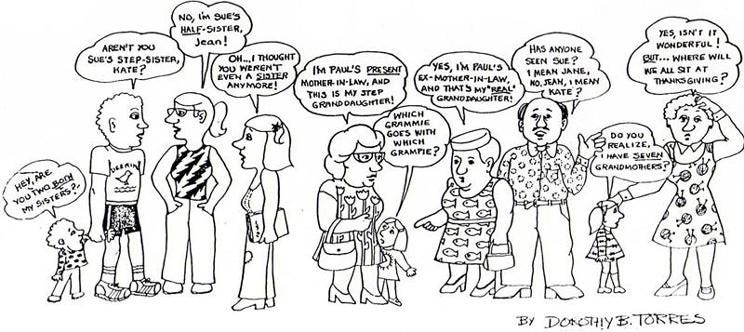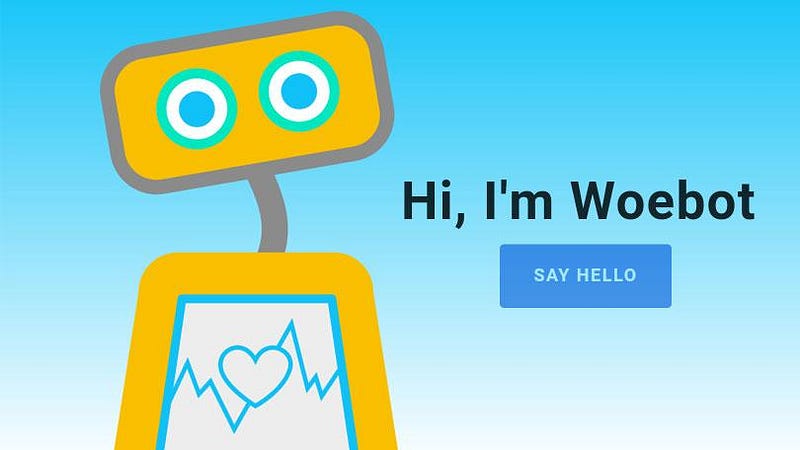Know your Target Market: The Decentralized-Peer-Attached (DPA) Generation.

In the fast paced world of technology and marketing, many variables are used to inform innovation and design, and to identify potential customers and target markets. Psychographics is one field of study that attempts to quantify such variables as consumer activity, interest, opinion (AIOs), attitudes, values and behaviour. According to Infusion.com, psychographic segmentation is more important than knowing customer demographics.
Psychographic segmentation helps marketers understand that why — the goals, challenges, emotions, values, habits, and hobbies that drive purchase decisions.
One important variable that is absent from psychographic segmentation is the powerful influence of attachment dynamics, or in layman’s terms, our biologically wired need to connect and stay connected with significant others.
If psychographics is a way of looking at the outer shell of a car, then attachment theory is a way of looking under the hood at the engine components powering the car.
Attachment Theory
Attachment theory attempts to explain how relationships with primary caregivers in the first six years of life and beyond lay the template for future relationships and how we relate to the world.
More specifically, attachment theory, supported by neuroscience, claims that within the first three years of life our deep brain structures become hard wired via how our primary attachment figures (i.e. parents in most cases) are able to attend and respond to our pre-verbal cues for affection, stimulus, safety, comfort and soothing.
This theory states that during these formative years children need caring, trusting, stable, predictable, emotionally available and receptive caregivers in order to develop into healthy adolescents and adults.
If we are provided with this ideal context, we develop what attachment theorists call a secure attachment style whereby we trust others and ourselves to navigate the challenges of life with flexibility, resilience and emotional intelligence.
In the absence of this ideal context we can develop an insecure attachment style that hinders our ability to adapt and form meaningful trusting relationships, and become unduly preoccupied with issues of trust and self-doubt.
The last 30 years have seen important changes to attachment and caregiving practices.
These changes have been reflected by and through new technologies and their usage. Beyond the usefulness of technology to address real world problems and to meet relevant and manufactured needs, in order for these technologies to take hold they must necessarily reflect unmet needs operating within the individuals embracing these technologies.
Institutional daycare

Historically, relational templates and structures were centralized and trust-based, with working parents placing their children in the care of a trusted family member or friend. Whereas today we have decentralized attachment structures with centralized parenting relegated to decentralized daycare institutions where children as old as one month are placed in the anonymous hands of institutionalized daycares.
This decentralized care giving economy is where anonymous day care providers are now responsible for providing the primary care for our children, where children turn to multiple impersonal, anonymous surrogate parental nodes to attend to their emotional-relational needs.
Changes in family structure

In addition, with the increased rates of separation and divorce, the centralized nuclear family is being replaced by the decentralized structure of the blended family. The blended family is decentralizing primary attachment figures where more attachment nodes are created with step-parents, step-siblings, step-extended families, etc.
The blended family is less stable, with higher divorce rates than nuclear families, creating a potential context for increased attachment volatility and anxiety among all family members.
At the heart of this anxiety is the ambiguity around the new familial contract where relational trust (the need to renegotiate the relational contract beyond blood lines within the family) is front and center in the evolving dynamic of the blended family.
Peer-attached culture
These important changes in child care and family structures are taxing on all family members leading to higher levels of anxiety (which is essentially diffused fear, mistrust and self-doubt), and an ongoing search for more secure, stable and predictable relational structures. In the absence of centralized, stable, trusting and predictable parenting and care-giving relationships, many children inadvertently turn to peers for guidance and validation.
This creates a peer-attached culture where only peers are considered as reliable and trusting allies.
Because the decentralized structures of family and caregivers have failed to provide them with the optimal context in which to meet their attachment needs, the emerging peer-oriented culture becomes a defining relational template for this generation.
The psychological fallout from this is a generation of insecure, anxious children turning to other insecure, anxious children to guide them through the labyrinth of adolescence and young adulthood.
Underlying this peer-oriented tendency is a fundamental distrust in the reliability and predictability of a centralized parental authority and its surrogates to provide them with the relational-emotional context they need.
The paradox of peer-oriented relationships is that even though they may feel intense they are more often than not void of any real intimacy.
This is evidenced by the reluctance of many teenagers and young adults to reveal their true vulnerabilities to their peers, even though they claim that these same peers are the most important people in their lives.
AI: Move over real human beings.

One manifestation of this peer-oriented culture is the anxious preoccupation of one’s status on social media platforms. Intimate relationships have been replaced by superficial social media interactions where fear of being truly known and revealed is a defining characteristic of this medium.
The repercussion of this is that self-esteem is now as volatile as weather patterns, at the mercy of innumerable faceless friends’ likes or dislikes of one’s superficial profile activities.
It is no wonder that depression and anxiety among teenagers and young adults are at record highs. Whereas many studies on mental health have identified the importance of two to five intimate friendships along with family support as sufficient to buffer people from experiencing such distress.
Furthermore, the developers behind Facebook’s new robot therapist Woebot claim that teenagers and young adults are more comfortable sharing their vulnerabilities with a robot than a real human being. However, this new robot therapist is not bound by a code of ethics nor is your intimate life completely hidden from Facebook .
Because Woebot isn’t a licensed medical provider, any conversations with it aren’t protected by medical data privacy and security law in the first place. While Weobot’s team has built a wall on their end to keep all of Woebot’s users anonymous, Facebook knows exactly who you are. And Facebook, not you or Woebot, owns all your conversations.
Woebot’s therapeutic claims are weak at best, and like playing Fifa 2017 on your X-Box may make you better at playing Fifa 2017 on your X-Box, but not necessarily better at playing soccer on a real field with real players. So will interacting with a robot make you better at interacting with robots but not necessarily “better” at interacting with other human beings (AI therapists is the subject of an upcoming article.).
Attention deficit-hyperactivity disorder
ADHD is all the rave now with Big Pharma riding on the tails of the new DSM-V diagnostic category medicalizing what is basically one of the many “symptoms” of an insecure attachment style. This in part helps us understand the appeal of apps and other technologies alongside media and marketing strategies that cater to this relational-cognitive deficit.
Disruptive technologies

Furthermore, the appeal of emerging blockchain technologies like Bitcoin and Ethereum, with their promises of an immutable decentralized ledger, peer to peer interactions without the oversight or control of a centralized authority, distributed autonomous organizations (DAO), trustless smart contracts and control over one’s privacy are ripe to reassure the preoccupations of this generation.
Political affiliation

The 2016 American election is revealing to the extent that Bernie Sanders, a 75 year old white male, ran a campaign that appealed to the values, concerns and preoccupations of this DPA generation.
From financing to volunteerism, his campaign structure was highly decentralized, mobilizing support through social media platforms that relied heavily on the trustworthiness of peers to mobilize local action and not a centralized organization led by an all knowing figure head with ties to centralized power structures. As the New York state primary exit polls revealed: 65% of 18–29 yr olds voted for Sanders vs 35% for Clinton.
Finally, our brains and basic needs as a species have not evolved very much over the last 30 thousand years. But what have evolved dramatically over the last 30 years are the tools at our disposal to connect with one another. These tools also mirror our evolving attachment practices and relational templates, and understanding the psychological factors underpinning these changes can lead to greater insights into how to best meet the needs of this generation.
Therefore the challenge for responsible innovation, design, marketing and policy, from an attachment and mental health perspective, will be to meet the needs of this decentralized-peer-attached (DPA) generation in ways that foster more meaningful connections and intimate interpersonal engagement.
